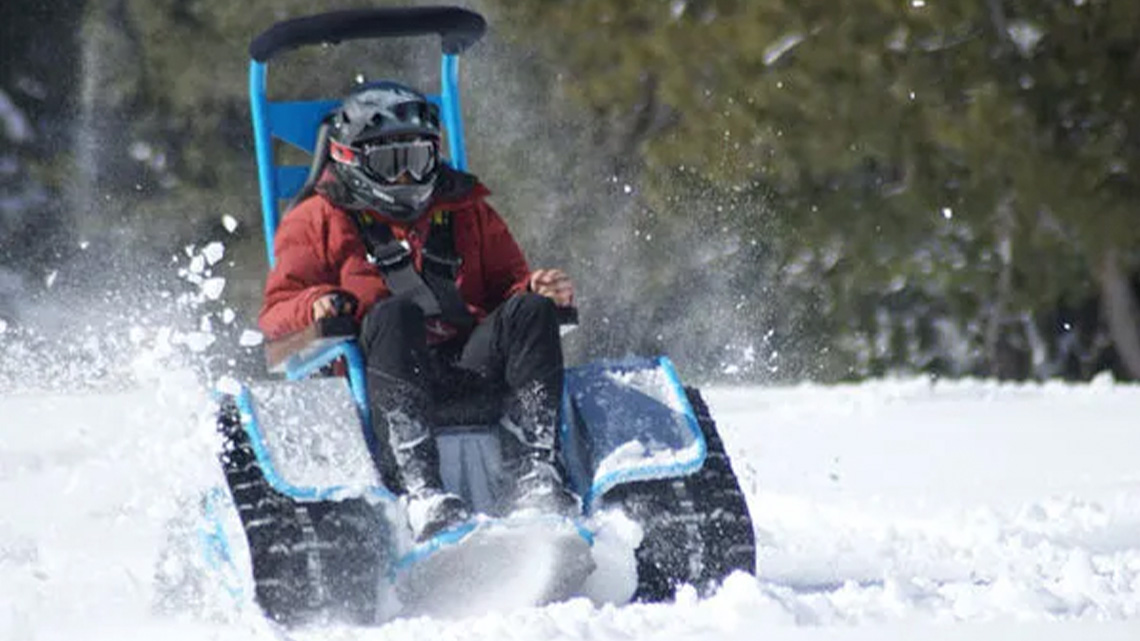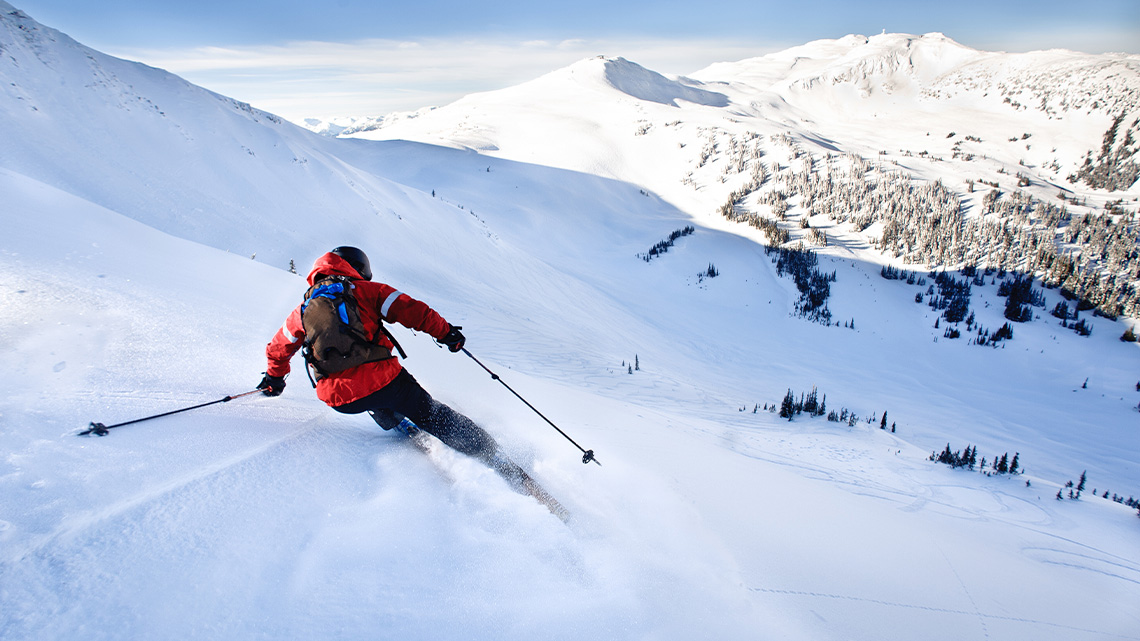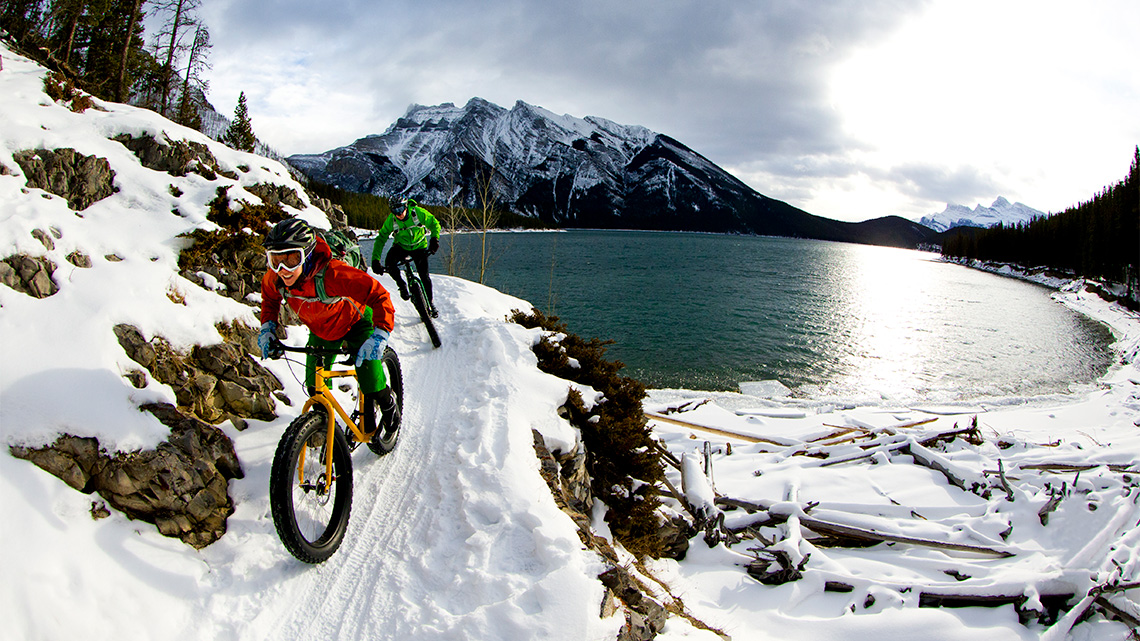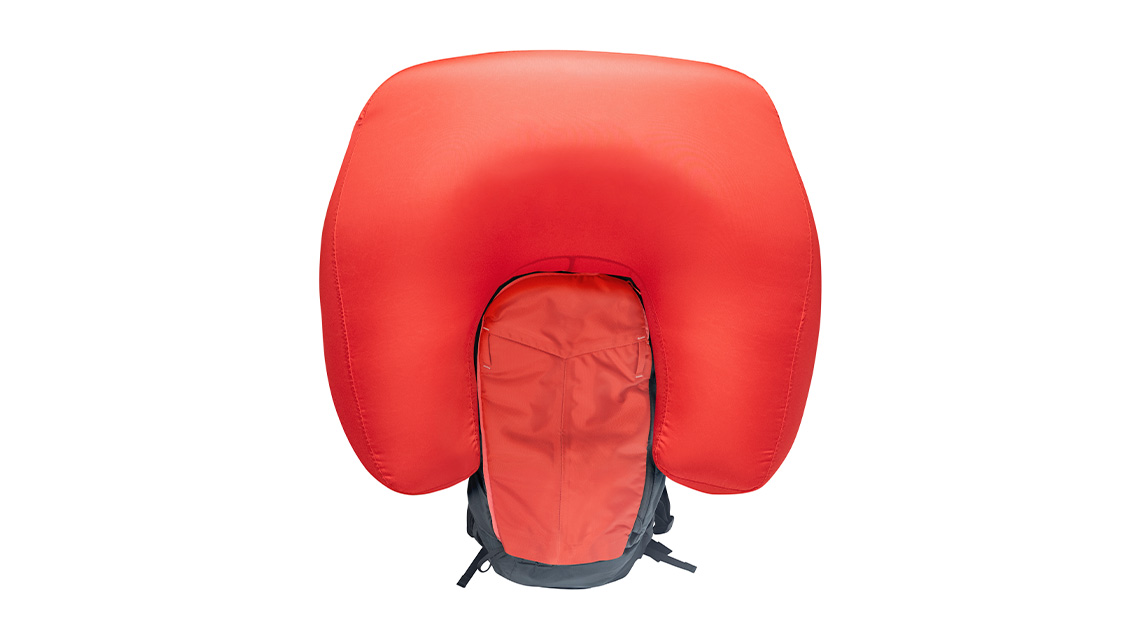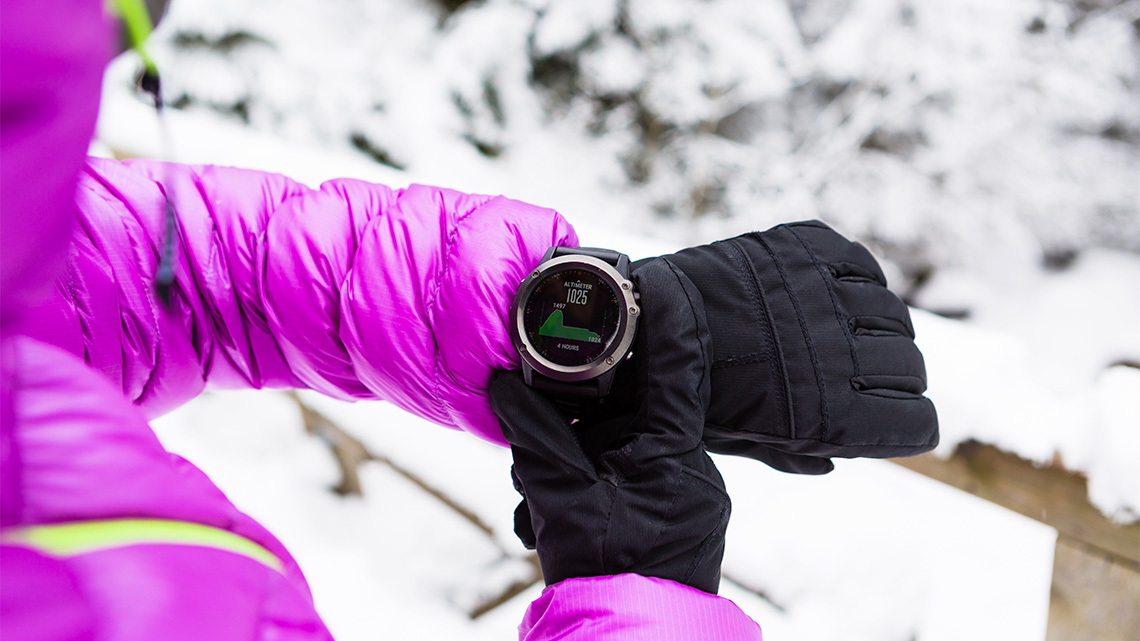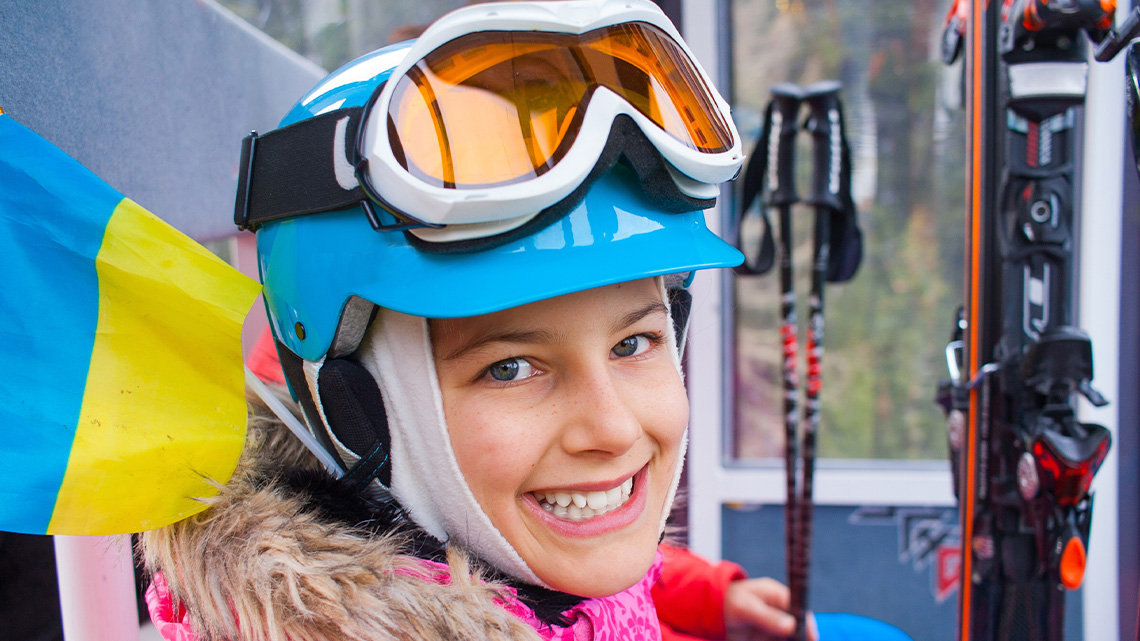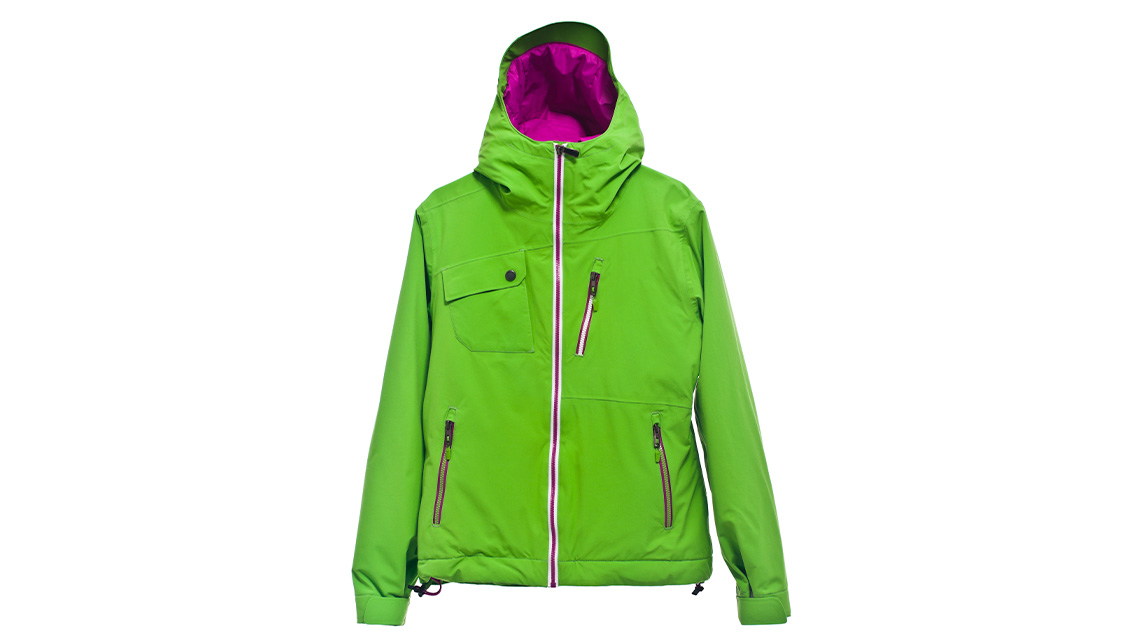Minds On
Extreme weather
Explore the following images of activities that take place in extreme winter weather.
As you explore, record anything you notice or wonder about the weather or the activity.
DescriptionA carousel of four images.
Image 1: There is a person riding in a motorized wheelchair in the snow. Instead of wheels, the wheelchair has treads over the tires. The chair has a seat and a back that comes over the head of the rider. There is a double seatbelt to stay strapped in. It is controlled through a joystick on the arm of the wheelchair.
Image 2: There are two people walking up a snow-covered hill. They are wearing winter coats, gloves, hats, snow pants, and boots. They are carrying sets of snowshoes on their backs.
Image 3: There is someone skiing down a steep, snow-covered mountain. They are dressed for the cold with snow pants, a winter coat, and helmet. They have ski poles they are holding and a backpack on their back.
Image 4: Two children on mountain bikes riding on a snow path on a large hill. There is a lake behind them and snow-capped mountains in the background.
How might someone adapt to travelling in extreme weather conditions?
What are some of the obstacles they might face?
Record your ideas in a method of your choice.
Action
Winter weather
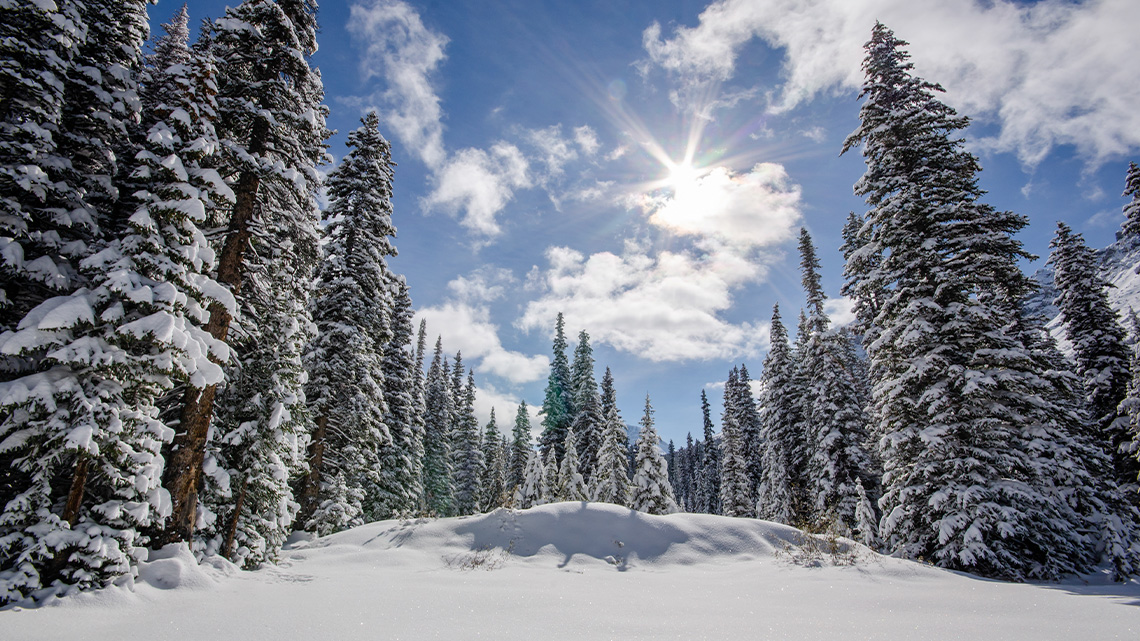
The winter season can bring with it some extreme conditions.
Each of the following conditions can impact people who are engaging in outdoor activities.
Press the following tabs to access examples of conditions in the winter.
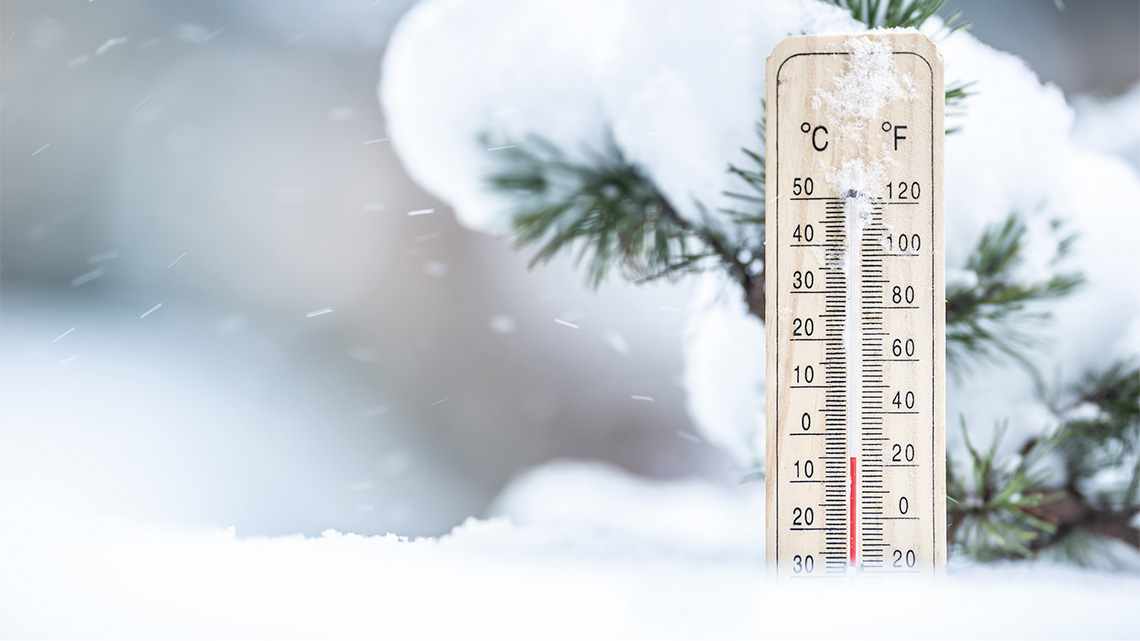
In Ontario, temperatures often drop below 0ºC in the winter months. When the temperature is below -20ºC, there is an extreme cold warning. This means that when people are outside, they need to protect themselves from exposure to the cold on their skin.
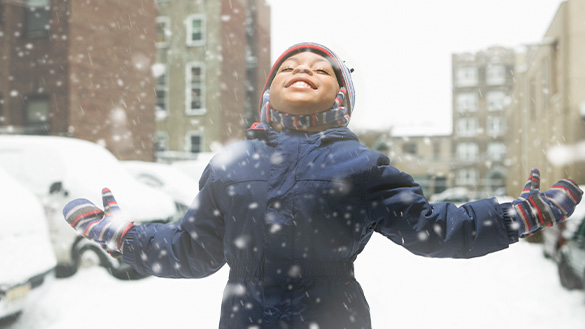
One way they can do this is to cover their body in protective clothing. Wearing layers can protect the body from cold. This includes wearing two layers of shirt and pants.
People can protect areas of their body that tend to be exposed by wearing gloves or mittens on their hands, waterproof boots on their feet, a scarf or neck warmer to protect their neck and a toque or hat on their head.
It is important for people to keep their body temperatures from dropping in extreme cold temperatures. Cold weather puts extra strain on the heart to pump blood through the body. It also uses up the body’s stored energy while it tries to produce heat which makes it difficult to think clearly or move the body.
If a person is not protected from the cold, there is also possibility of frostbite, which is an injury to the body because of freezing. It typically affects those areas of the body that are exposed to the cold like the nose, cheeks, chin, toes, or fingers.
A winter storm includes heavy snow, blowing snow, and extreme cold. Blizzards are winter storms that are considered dangerous. They include blowing snow and strong winds that blow the snow.
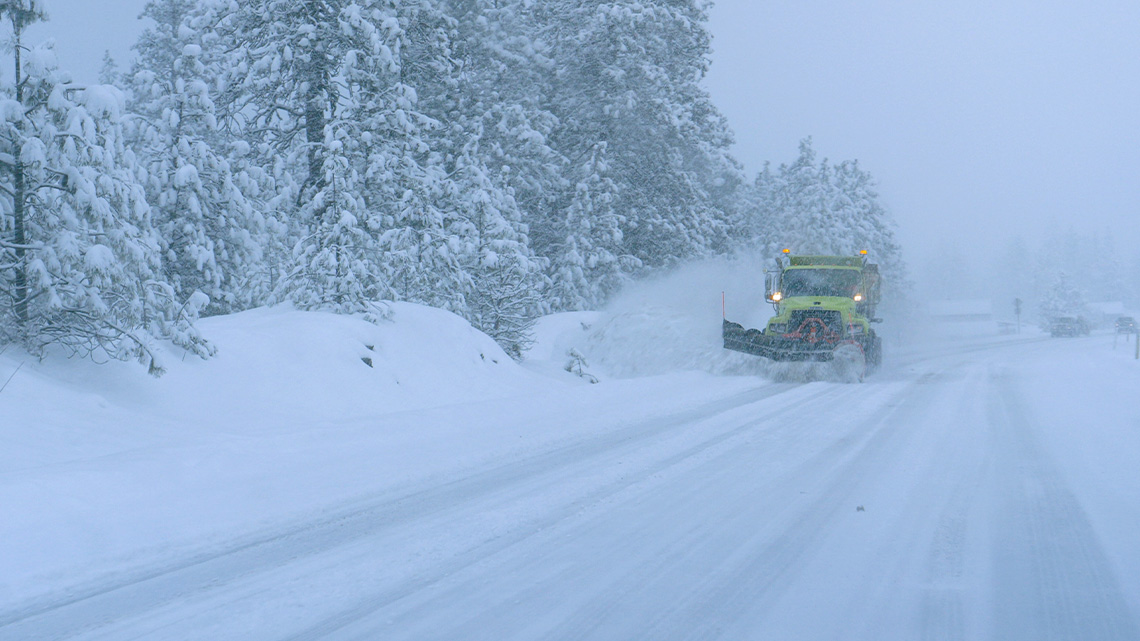
If people are outside during a snow blizzard, they need to be very careful. They often include extreme cold temperatures and cold winds. They can also include freezing rain which can cause a person’s clothing to become wet and then very cold, causing exposure to a person’s skin.
Because of the blowing snow, people could lose visibility and then get lost or find themselves in a dangerous place. It is important to be protected from these conditions. One way is to stay inside or away from the blowing snow, if possible.
When temperatures are extremely cold and there is a long period of freezing rain, ice gathers. When the rain touches the ground or objects like vehicles, trees, bridges, or power lines, it freezes immediately. This can be very dangerous for people travelling outside.
When the ice is heavy, it can cause large branches to fall and/or power lines to fall. This will sometimes affect power in homes and communication towers as well.
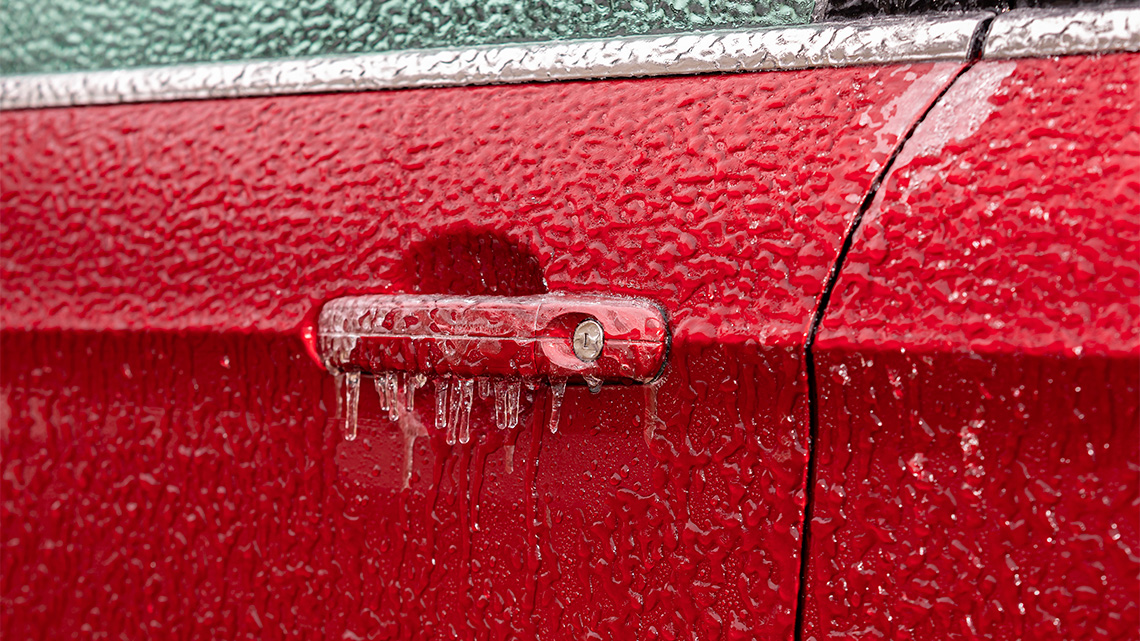
Travelling on ice can be extremely dangerous. It is very slippery, and falls can happen easily. People should try to avoid travelling outside, if possible, during an ice storm.
Use your learning to match potential dangers with each type of extreme winter weather conditions.
For each sentence, select the missing letter, word, or phrase from the drop-down menu.
Choose one of these extreme winter weather conditions and answer these questions:
- What is one way that this condition can affect a person’s health?
- How can a person reduce the negative effects of this weather condition on their health?
Record your answers in a method of your choice.
Protective equipment
When there are extreme weather conditions, it can be a good idea to avoid being outdoors, but this is not always possible. Some people enjoy engaging in outdoor activities, even during extreme winter conditions. For these reasons, there is protective equipment that can be used in these situations.
Let’s return to the images in the Minds On section. What protective equipment do you notice in each image?
Record your answer in a method of your choice.
DescriptionA carousel of four images.
Image 1: There is a person riding in a motorized wheelchair in the snow. Instead of wheels, the wheelchair has treads over the tires. The chair has a seat and a back that comes over the head of the rider. There is a double seatbelt to stay strapped in. It is controlled through a joystick on the arm of the wheelchair.
Image 2: There are two people walking up a snow-covered hill. They are wearing winter coats, gloves, hats, snow pants, and boots. They are carrying sets of snowshoes on their backs.
Image 3: There is someone skiing down a steep, snow-covered mountain. They are dressed for the cold with snow pants, a winter coat, and helmet. They have ski poles they are holding and a backpack on their back.
Image 4: Two children on mountain bikes riding on a snow path on a large hill. There is a lake behind them and snow-capped mountains in the background.
Press ‘Possible Answer’ to access types of protective equipment in the examples provided.
Winter boots, jackets, goggles and a helmet are some of the types of protective equipment in the examples provided.
Helmets
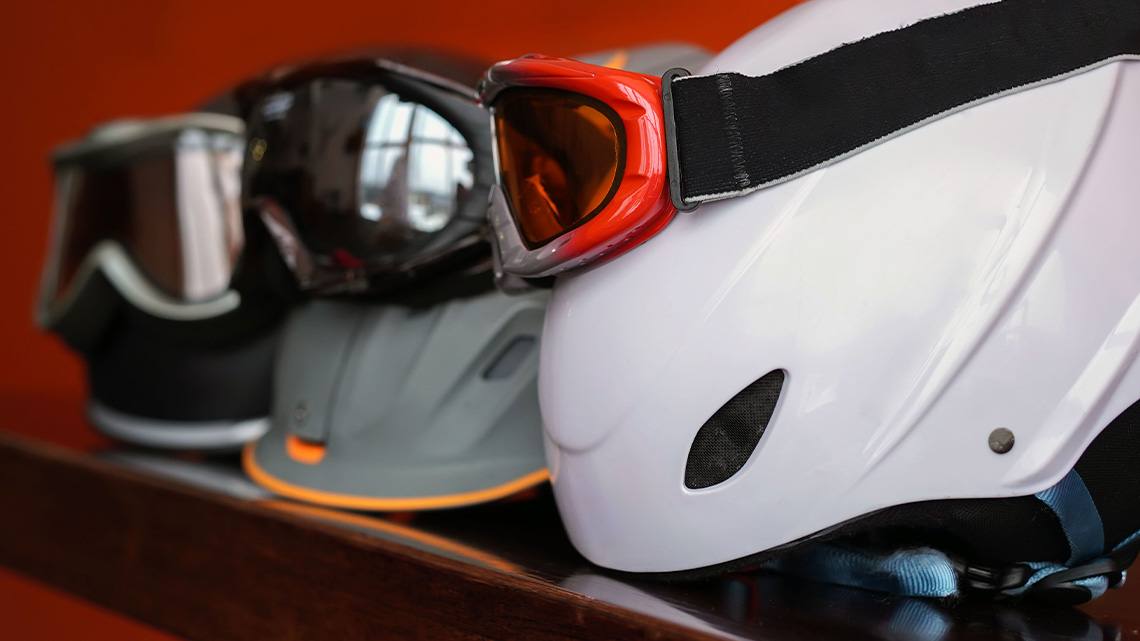
There are helmets that have been designed and made specifically for snow sports. Helmets reduce head injuries by 50%. Helmets also help to provide warmth. They are necessary for activities that involve fast speeds and sudden movements on snow or ice.
A helmet needs to fit the head properly. It is constructed with a strong outer shell and has air vents which allows the temperature to regulate. The inside must be able to withstand a hit, so the material is soft against the head but thick enough to protect as well.
Goggles and visors
Goggles and visors are important for activities that take place in extreme winter conditions. They not only protect a person’s eyes, but they also support vision when the snow or wind is blowing, protect from freezing rain and provide protection from the glare of the sun that reflects on the snow.
Did You Know?
Did You Know?

Inupiaq snow goggles carved and laced using baleen (whalebone) and sinew.
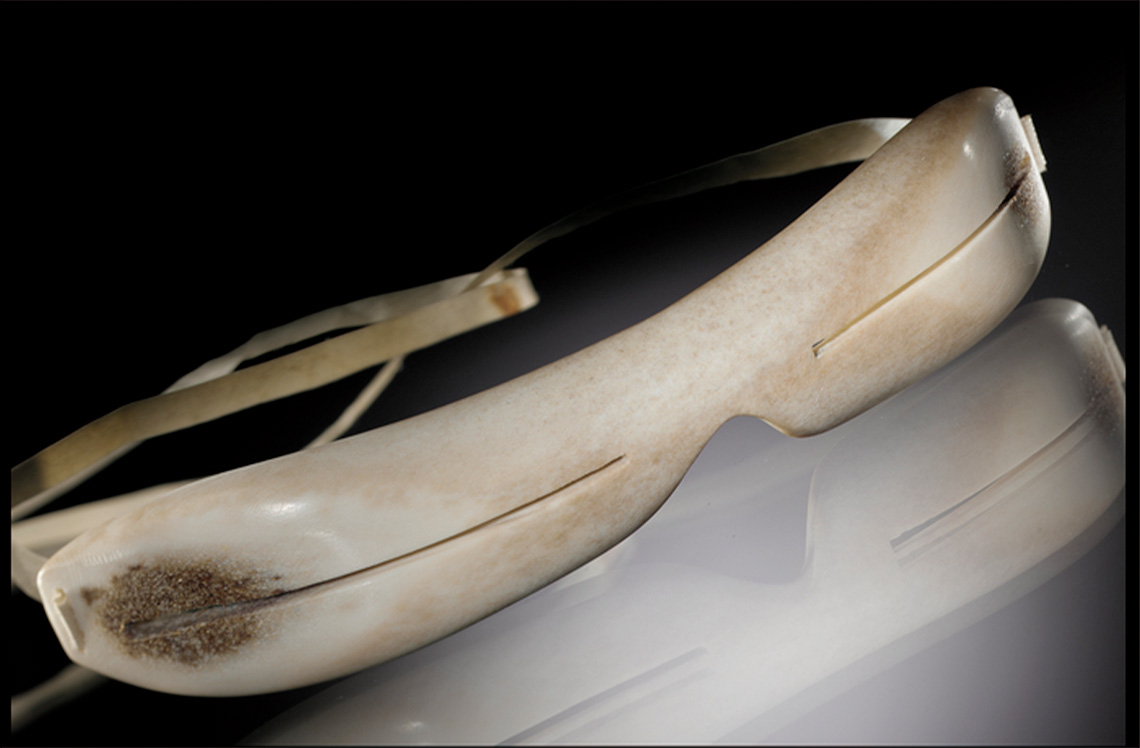
Igloolik snow goggles made from carved caribou bone with a caribou skin strap. Made by Isaac Pakak.
In Canada, the Inuit homeland is called Inuit Nunangat which includes Nunavut, Inuvialuit (the coasts of the Northwest Territories and the Yukon), Nunavik (Northern Quebec), and Nunatsiavut (Newfoundland and Labrador).
The Inuit are original people from the Arctic and northern regions of Canada, Alaska, Russia, and Greenland.
The Inuit have developed many creative innovations over thousands of years and continue to do so today. Tools have been developed for hunting and trapping. Clothes and boots are created from the skins and furs from the animals hunted.
One of the many safety innovations developed were snow goggles. As the sun reflects off of snow it can negatively impact a person’s eyes. Snow goggles have two thin slits which work to protect the eyes. Snow goggles were traditionally made out of ivory, bone, antler and/or wood and fastened with hide or sinew. They are still created today with the same design using a combination of traditional and modern materials.
New innovations in winter equipment
Engineers involved in designing winter sports safety equipment are using digital and smart technology to create new innovations in snow sport technology. Some of these innovations include:
Fun fact
Did you know that a jacket has been developed that uses smart technology to remove sweat? This keeps the person wearing the jacket warm and dry throughout their outdoor activity!
- Why do you think it’s important for new innovations to be created for protection from extreme weather conditions?
- How do these emerging technologies affect people engaging in outdoor activities in extreme weather conditions?
Record your thoughts in a method of your choice.
Consolidation
Design time!
This learning activity connects new and existing approaches for young scientists to create positive changes in their communities.

For this task, use your learning to design a new piece of protective equipment to protect against an extreme weather condition.
This could be a winter snow sport, but it could also be a piece of protective equipment for travelling in snow, wind, freezing rain, or ice. You can use information and images found in this learning activity, but you can also do a little extra research to assist you if you wish.
Before beginning your equipment design, explore this video that outlines how the Engineering design process works.
You will be using the steps included to design a piece of protective equipment, but you will not be building, testing or improving your design.
Check out this video to learn about the steps of the Engineering Design Process.
Consider the following questions before you begin.
- How does your design protect against an extreme winter weather condition?
- What material might your equipment be made from?
- How will people use your design?
- How does your design help reduce negative effects from this extreme weather condition?
You can record your design as a labelled diagram, as a recording, or as a written explanation.
Reflection
How do you feel about what you have learned in this activity? Which of the next four sentences best matches how you are feeling about your learning? Press the button that is beside this sentence.
I feel...
Now, record your ideas about your feelings using a voice recorder, speech-to-text, or writing tool.
